Crowns and bridges
Crowns and bridges
Crowns and bridges: sustainable replacements for teeth
Crowns and bridges are intended as permanent replacements for teeth. They approach the original form and function as much as possible. A treatment for a crown or bridge is more complicated than for a normal filling. You will therefore have to return to your dentist several times.
What is a Crown?
A crown is a cap made of metal and/or porcelain that fits exactly over a ground tooth. The cap is glued to the tooth or molar. A crown restores the tooth or molar to its original shape and function.
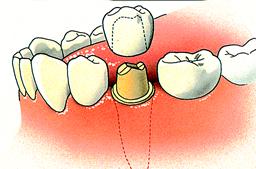
When may a crown be necessary?
1. There is insufficient support for a filling. A large part of the tooth or molar may have been lost due to tooth decay.
2. Improving the appearance. Usually this concerns discolored and / or poorly formed teeth or molars that are in the front of the mouth.
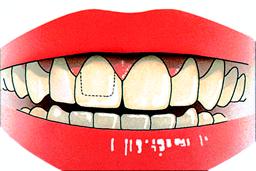
What is a Bridge?
A bridge is made to replace one or more missing teeth. A bridge is attached to two or more piers. These are ground teeth or molars on either side of the open space of the missing tooth or molar. A bridge consists of two or more crowns that fit on piers and a bridge intermediate part, also called a 'dummy'. This consists of one or more artificial teeth and/or molars that replace the open space.
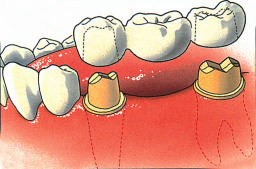
When may a bridge be necessary?
1. To chew better.
2. Improving the appearance.
3. To prevent teeth from becoming crooked and/or growing out.
If teeth are missing, the teeth of the other jaw may grow in the direction of the open space. The teeth or molars on either side of the open space can also grow together, causing them to become crooked.
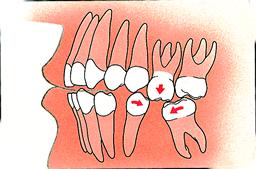
What types of bridges are there?
Ordinary bridge
In an ordinary bridge, the piers are on either side of the open space.
Free-ending bridge
In a free-ended bridge, the pillars are on one side of the missing tooth.
etching bridge
An etching bridge is usually possible when the teeth on either side of the open space are virtually intact. Hardly any of the intact teeth need to be ground for this construction. The etching bridge is mainly used to replace one or two teeth. The bridge is glued invisibly to the inside of the teeth by means of metal mounting plates with a special adhesive. An etching bridge can usually be removed fairly easily if necessary.


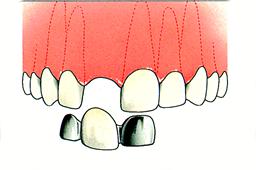
What material are crowns and bridges made of?
Porcelain
Porcelain crowns can be used in many situations. Thanks to new techniques, the risk of breakage has been ruled out. The material is tooth-colored and looks very natural.
Metal porcelain
Metal is used as a base for this. For appearance, a layer of tooth-colored porcelain is applied over the visible metal.
Metal
Sometimes crowns and bridges are made of metal only. This material is very strong and durable. They then get a gold or silver-colored gold alloy. Because of the color, the dentist only places them in the back of the mouth.
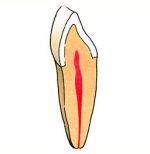
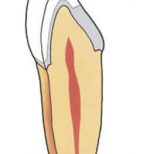
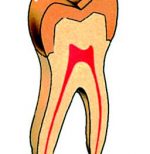
How is a crown or bridge treated?
The treatment of a crown or bridge is done in steps. This requires two or three visits to your dentist. A crown or bridge is not made directly in your mouth, but in a dental laboratory. This takes about one to two weeks.
The treatment in steps
Grinding of the tooth or molar
First of all, part of the tooth or molar is ground down until there is enough space to make a crown or bridge. If necessary, you will be given a local anesthetic.
Print
The dentist then makes an impression of your entire jaw or the part in which the ground tooth is located. To do this, the dentist inserts an impression tray with a rubbery mass into your mouth. This creates an impression into which plaster is later poured in a dental laboratory. The crown or bridge is made on this plaster model.
Bite registration
With the bite registration, the dentist determines how the teeth of your lower and upper jaw fit together. This requires an impression of the opposite jaw. The dentist uses a wax plate for this.

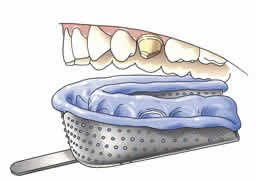
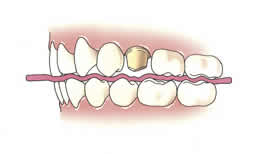
Determine color
If the crown or bridge is in the front of the mouth, it usually has a tooth-colored outer layer. Together with your dentist you will find a suitable color.
emergency facility
For your comfort and to protect the ground tooth or molar, the dentist makes an emergency provision (temporary crown). Do not eat hard or sticky products with it. The temporary crown is not designed for that. In case of breakage or loosening of the temporary crown, contact your dentist.
Pin
At the last appointment, your dentist fits the crown or bridge into your mouth and secures it. He applies a fast-hardening cement to the inside of the crown or bridge. He then slides the crown or bridge into place and presses it firmly.

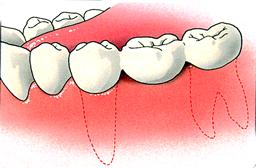
Structure
If your tooth or molar offers too little support for a crown or bridge, your dentist can first make an abutment. He glues the superstructure into the root canal with a pin. Then he places the crown or bridge over the superstructure.

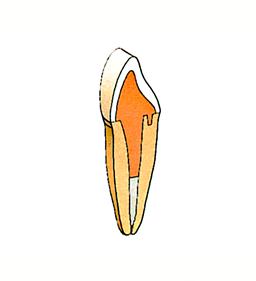
Maintenance of crowns and bridges
Daily oral hygiene is especially important for crowns and bridges. You should especially clean the gums around the crown or bridge. A vulnerable spot is the edge of the crown or bridge. Plaque can easily remain on it. Plaque causes cavities along the edge of your crown or bridge and gum inflammation. Carefully brush this area with a soft toothbrush and use toothpicks, interdental brushes and/or dental floss. Your dentist or dental hygienist can advise you on this.
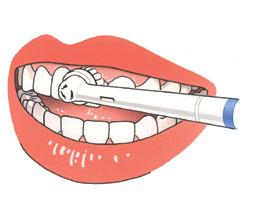
How long does a crown or bridge last?
The materials are so durable that a crown or bridge will last at least ten years. Good oral hygiene has a lot of influence on durability. An accident can of course prevent a crown or bridge from being damaged prematurely.
Will I suffer from pain after treatment for a crown or bridge?
After placement, a tooth fitted with a crown or bridge can sometimes be sensitive. This is usually temporary. Consult your dentist if sensitivity persists or becomes more severe.
What does a crown cost?
The costs for a crown depend on the type of crown, the material used and the costs for the dental laboratory. In addition, it is important whether a structure is necessary. Ask your dentist for a budget in advance.
What does a bridge cost?
The costs for a bridge depend on the type of bridge and the number of teeth that need to be replaced. An etching bridge is often cheaper than a normal bridge. The following also applies: ask your dentist in advance for a budget.
Are crowns and bridges covered by insurance?
Reimbursements vary per insurance policy. Your health insurance policy states which reimbursements you are entitled to.